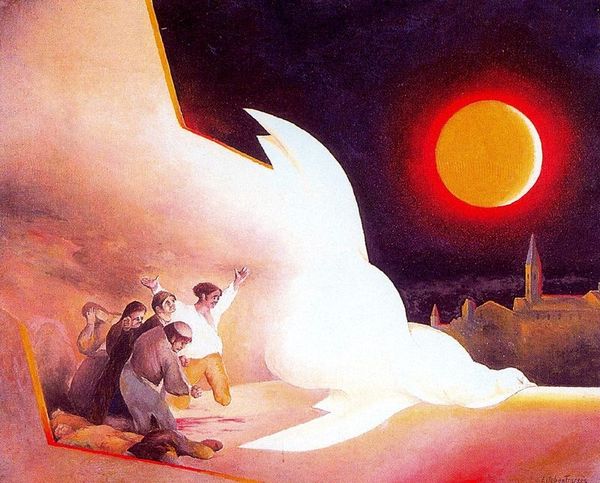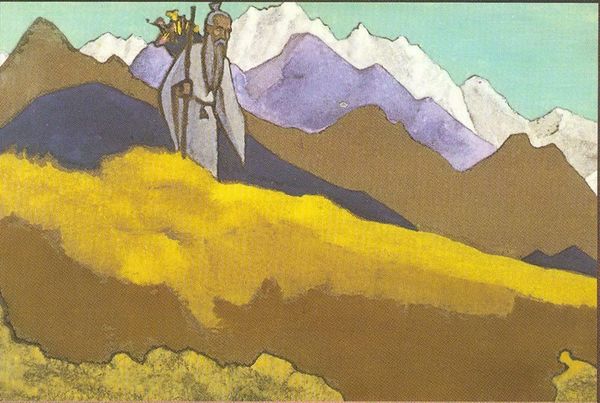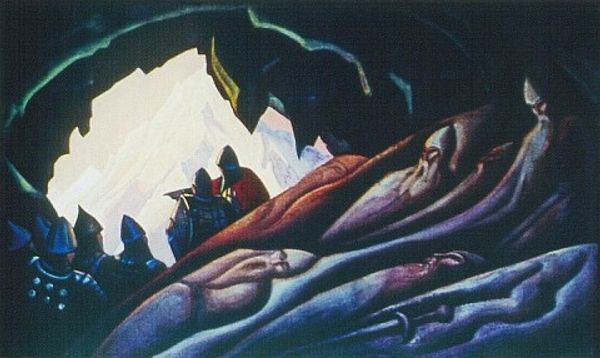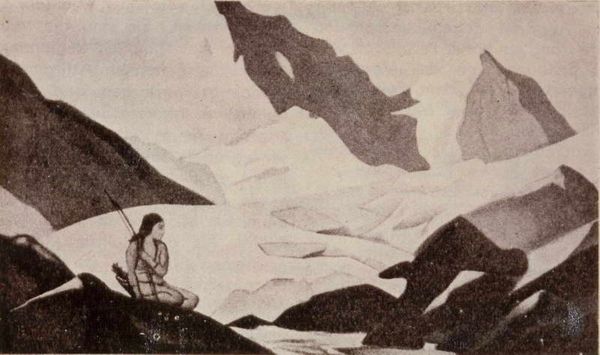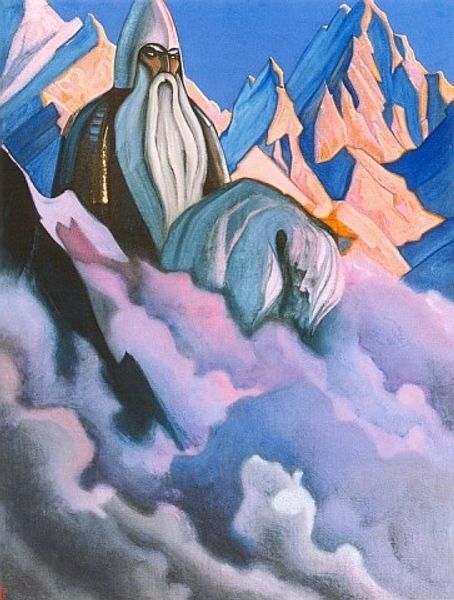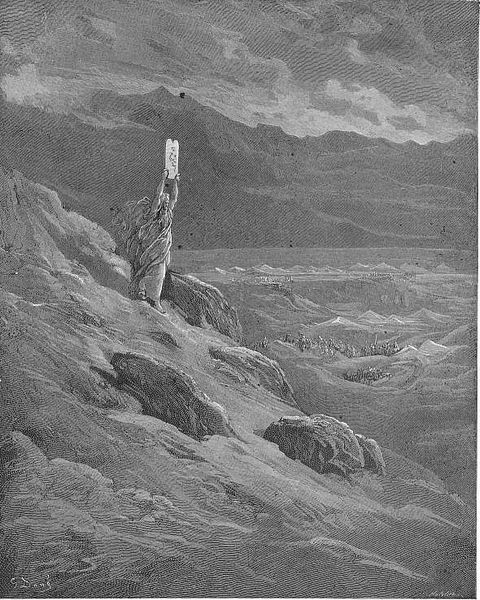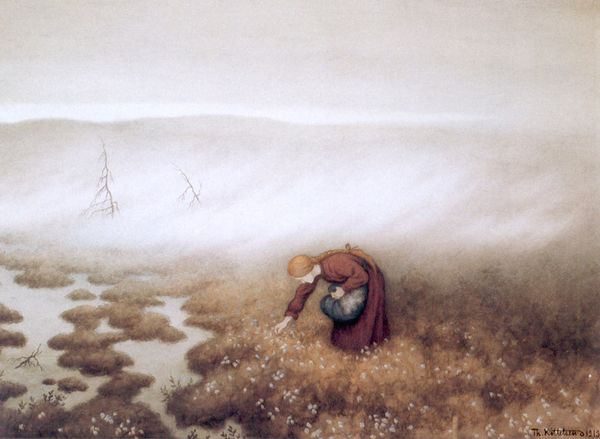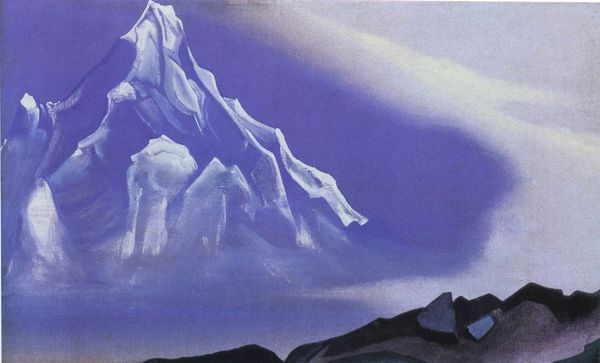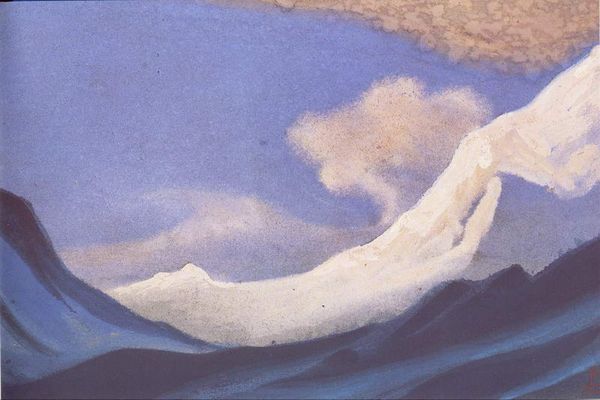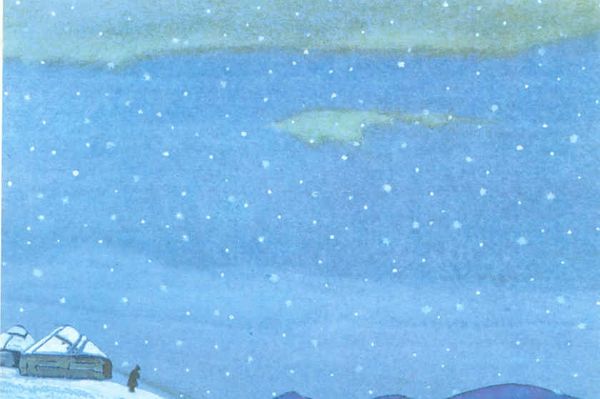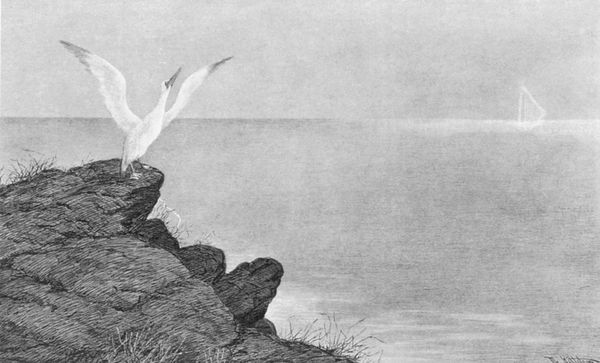
Dimensions: 46.5 x 30.5 cm
Copyright: Public domain
Editor: Here we have Nicholas Roerich's 1944 oil painting, "She Who Leads". The monumental mountain face, rendered in cool, muted tones, certainly commands attention. It's softened only by the figures in the lower-right, climbing against the slope. How do you see this work? Curator: Immediately, my mind goes to the very process and materials used. Roerich's layering of oil paint—that specific medium chosen and made available in 1944, during wartime conditions no less—tells a story itself. Consider the pigment's source, the labor involved in its production and distribution, and then, Roerich's very physical act of applying those materials to the canvas. The mountain itself, while visually prominent, is made possible only by the paint itself. It invites questions about accessibility of artistic practice itself and cultural consumption during wartime. Editor: I hadn't considered it from that angle before, more focused on the allegorical or historical reading implied by its style. Curator: And is there any wonder why? His symbolism cloaks deeper societal questions about who has the privilege of engaging with art making in 1944, in this instance the painting feels very tied to the act of its production, of making art as a way to assert agency over the materials, or in the world more broadly, at hand. Editor: So the art becomes less about the woman leading, and more about how art materials can be made in a period of hardship and uncertainty? Curator: Precisely! The mountain isn't simply a majestic backdrop; it's rendered in physical stuff and the oil pigments become stand-ins for those who could or could not access materials during wartime circumstances, but equally about the agency for someone, anyone, who CAN get their hands on pigments and turn raw materiality into artwork! The value becomes, as I see it, wrapped up in the tangible application of production in 1944. Editor: That gives me a fresh view of how material constraints and resourcefulness shape what artists create, especially during specific cultural and material circumstances. It opens the painting up beyond the narrative! Curator: Exactly, thinking about the context can bring us new meanings.
Comments
No comments
Be the first to comment and join the conversation on the ultimate creative platform.
